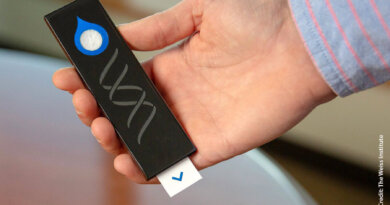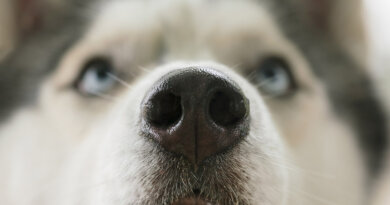A Month With No Alcohol?
Dry January: It means you don’t drink alcohol for the month of January. Experts say it gives your body a chance to reset and allows you to re-evaluate your relationship with alcohol – and it’s getting more popular.
What began when U.K. resident Emily Robinson paused her drinking to train for a half-marathon in 2011 turned into an official Alcohol Change UK campaign that has taken off. Today, millions both in the U.K. and across the pond in the U.S. have vowed to “stay dry” for January 2024.
Kim Evans was a pioneer of sorts. She began going dry in January about 15 years ago as part of a program at her Atlanta gym. She was in her mid-20s, and “hangovers were becoming a thing,” she says, so she gave it a try.
“I did it with my gym buddies and was surprised by how much I liked it, and it was much easier than I expected,” she says.
At first, Evans says, the social pressure was worse than the craving: “It was almost like misery loves company and people didn’t want me to succeed.” Now, she’s a pro and brushes off questions with humor. Where she once needed an “accountability buddy” to help her through the month, she now shares her tips and tricks with others.
As a Dry January veteran, Evans, 39, says benefits abound: Less binge-eating, better sleep, more energy, better hydration, and more mindfulness about diet.
“I always feel better,” the licensed professional counselor says. An added bonus: “I’m always impressed with how much more money I have.”
These are just some advantages of short-term abstinence, says George Koob, PhD, director of the National Institute on Alcohol Abuse and Alcoholism. Studies show a 1-month abstinence from alcohol can lead to improvements in insulin resistance, blood pressure, body weight, and cancer-related growth factors.
Studies have long shown that alcohol use raises the risk of stroke, heart problems, high blood pressure, diabetes, liver disease, and various cancers, among many other illnesses. It can also be bad for your sleep, mood, decision-making, driving, workplace performance, and social interactions.
Dry January “basically reflects a change in culture in our country,” says Koob, who has studied the neurobiology of addiction for most of his career. “People are becoming more aware that a root cause for individuals’ health problems is alcohol.”
The NIAAA does not preach prohibition, Koob says, but the institute does support international initiatives such as Dry January, Sober October, and Dry July. He’s also pleased to see the growth in mocktails and dry bars, whose sales have increased by hundreds of millions of dollars in recent years.
“It gives people an option for not drinking without feeling stigmatized,” he says.
Chris Marshall, 40, opened the alcohol-free Sans Bar in Austin, TX, in 2017, in part to help combat that stigma. He has watched an explosion of new products and creative concoctions.
Nonalcoholic beverages once meant soda, juice, bad beer, and mediocre wine, says Marshall. Now, it’s not just establishments like his that have raised the bar, but entire specialty stores selling botanicals and other nonalcoholic options of a much higher quality.
Marshall wasn’t always a champion of the dry life. He struggled himself. As the editor of his high school’s newspaper, he would sneak into the darkroom for a drink. He realized he had a problem in college and kicked booze – he will be sober 17 years in February – before pursuing a career in counseling.
In his work as a mental health counselor, he met many patients struggling with substance abuse as he had. He also saw adults ”looking for connection” – no surprise in a country battling an “epidemic of loneliness,” according to the U.S. surgeon general.
Sans Bar is his way of trying to help. People connect over sophisticated drinks without the risks and complications that can come with drinking alcohol – drinks like Marshall’s Gold Fashioned, made with alcohol-free whiskey and bitters, sweet potato simple syrup, cherry, and an orange peel garnish.
Sans Bar is more than drinks, though, Marshall says. If you close your eyes, he says, you’ll hear the sounds you hear in any bar: music, talking, bartenders making beverages, but the conversations are different.
“People are much more present, talking to and with each other, rather than at each other,” he says.
There’s a lull in business around the holidays, Marshall says, but “once January 1st rolls around, it’s our time to shine.”
Having an alternative drink is just one key to a successful Dry January, Koob says. It doesn’t have to be a Gold Fashioned. Soda water with lime works just fine. (And Evans notes it looks like alcohol and fends off the inevitable questions about whether she’s pregnant!)
Other tips for success, according to Koob:
- Let friends and family know about your “dry” plans.
- Recruit a loved one to join you, if possible.
- Practice a polite but assertive “no thank you” for drink offers.
- Have a plan in place for Feb. 1.
- Ensure nonalcoholic options are available at gatherings (whether host or guest).
Use Dry January as a chance to re-evaluate your relationship with alcohol, says Koob. Notice when you crave it and try to find other ways to address those issues. Feeling anxious? A trip to the gym may be just what you need. Craving social interaction? Try a walk or dinner with a friend.
Finally, Koob says, it’s important to notice the positive aspects of abstinence. Keep a journal, he says, and jot down any improvements you notice in your health, demeanor, or interactions with others. Using an app can help set goals and track progress, too. Alcohol Change UK offers the Try Dry app, but there are others. Ask your health care provider for guidance if you’re unsure.
Remember, Koob says, “If you feel better when you stop drinking for a month, your body is trying to tell you something.”



